Form Follows Flow
Ooze architects were founded in 2003 by Eva Pfannes and Sylvain Hartenberg. They are based in Rotterdam and work internationally for different municipalities, property developers, arts and cultural institutions and private clients.

Eva Pfannes and Sylvain Hartenberg at the Sitio Burle Marx presentation in Rio de Janeiro, Brazil | Photo © Rodrigo
With Eva and Sylvain we discussed how they combine understanding of natural processes with technological expertise either in temporary art works or regional urban strategies. The cyclic closed-loop processes found in nature are the foundation for each intervention of Ooze’s work.
Ooze (üz) is a soft deposit on the bottom of a body of water, a marsh or bog that results from the flow of a spring. Let the water flows begin.
—
What is a role of an architect today?
Sylvain: There are many different levels of practicing architecture. The future architect is a mediator, integrator of social, built and financial processes. The role of the architect is expanding and becoming linked to financial issues, to heal specific community or social context and remediate broken urban fabrics.
Eva: In the past lots of project strings happened separately. Their architect, developer, landscape architect, engineer, water engineer was separated but with the climate changes we need to integrate all experts together and make solutions that works. If we separated it, many cities prove the social or financial suffering.
In which sense visualize the processes?
Eva: To visualize the processes means to visualize the unbuilt for. As working with water, we could say that Form Follows Flow. These flows in urban environments are mostly hidden under the ground. The more modern society has become the more hidden are its processes. With all the question how can we live more sustainable and in harmony with the planet, we need to visualize and understand those processes and how we can work with them. That’s where we also see our role to visualize processes and then use them to connect them to many complex parts.
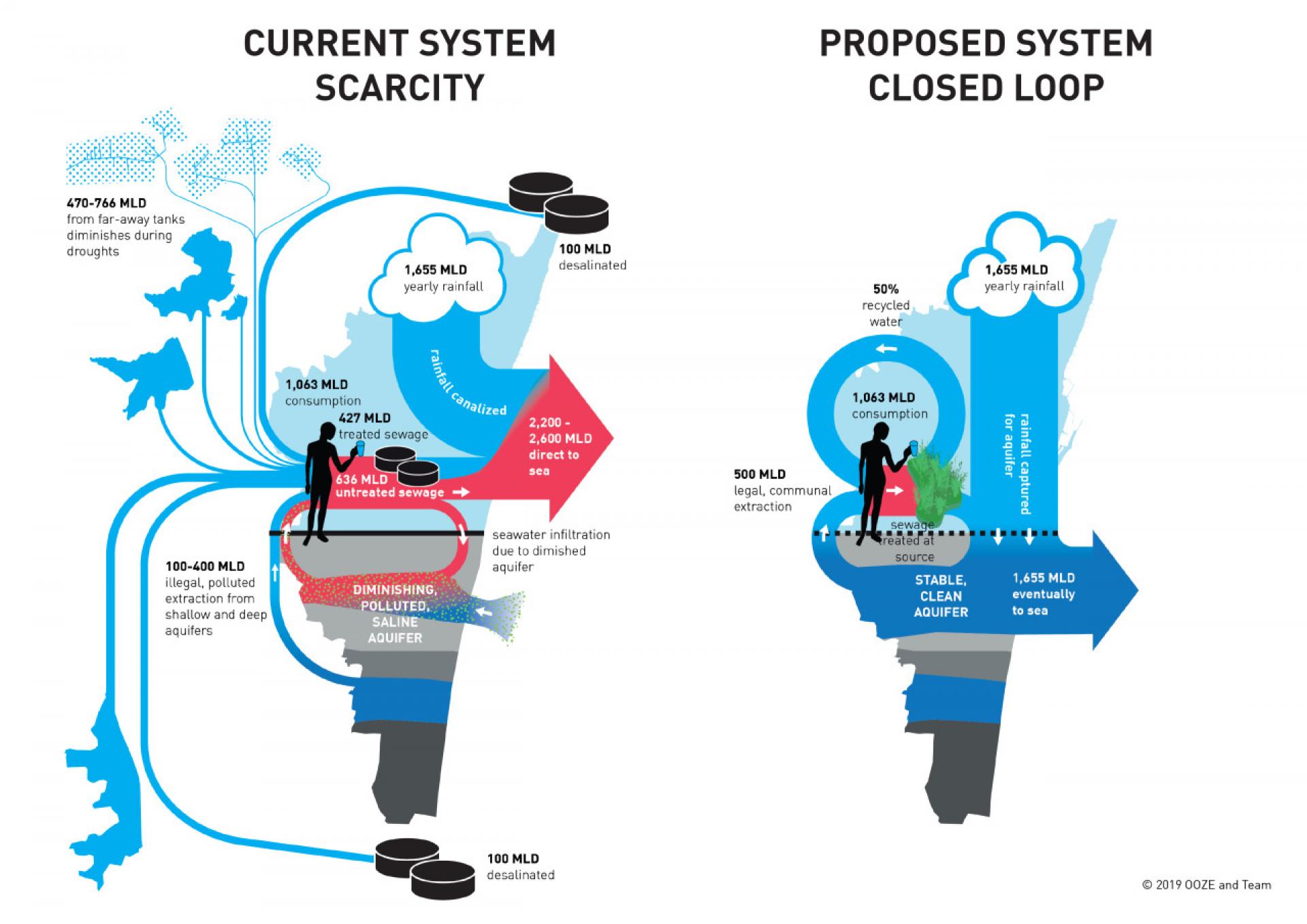
Diagram visualization for the project The City of 1000 Tanks. | Source © Ooze
In a way you need to invent your own approach? Like your system-thinking on the practical base?
Sylvain: Both of us have a more standard (European) German and French education but also studied in Bartlett UCL London where we learn to work with the narrative and process. The hybrid between these two is what we are doing in our practice now. We try to address much bigger and important issue and to bridge and question what is really needed in specific situation.
So, it depends a lot about the education?
Eva: When we start working on an art piece with Marjetica Potrč, we start with the intact research of the context. This way of working we developed intuitively. It was not something that we learn in school but part we learn by doing. Right now, we are working on an urban strategy and implementation project The City of 1000 Tanks in India where we very much getting into the financing of projects.
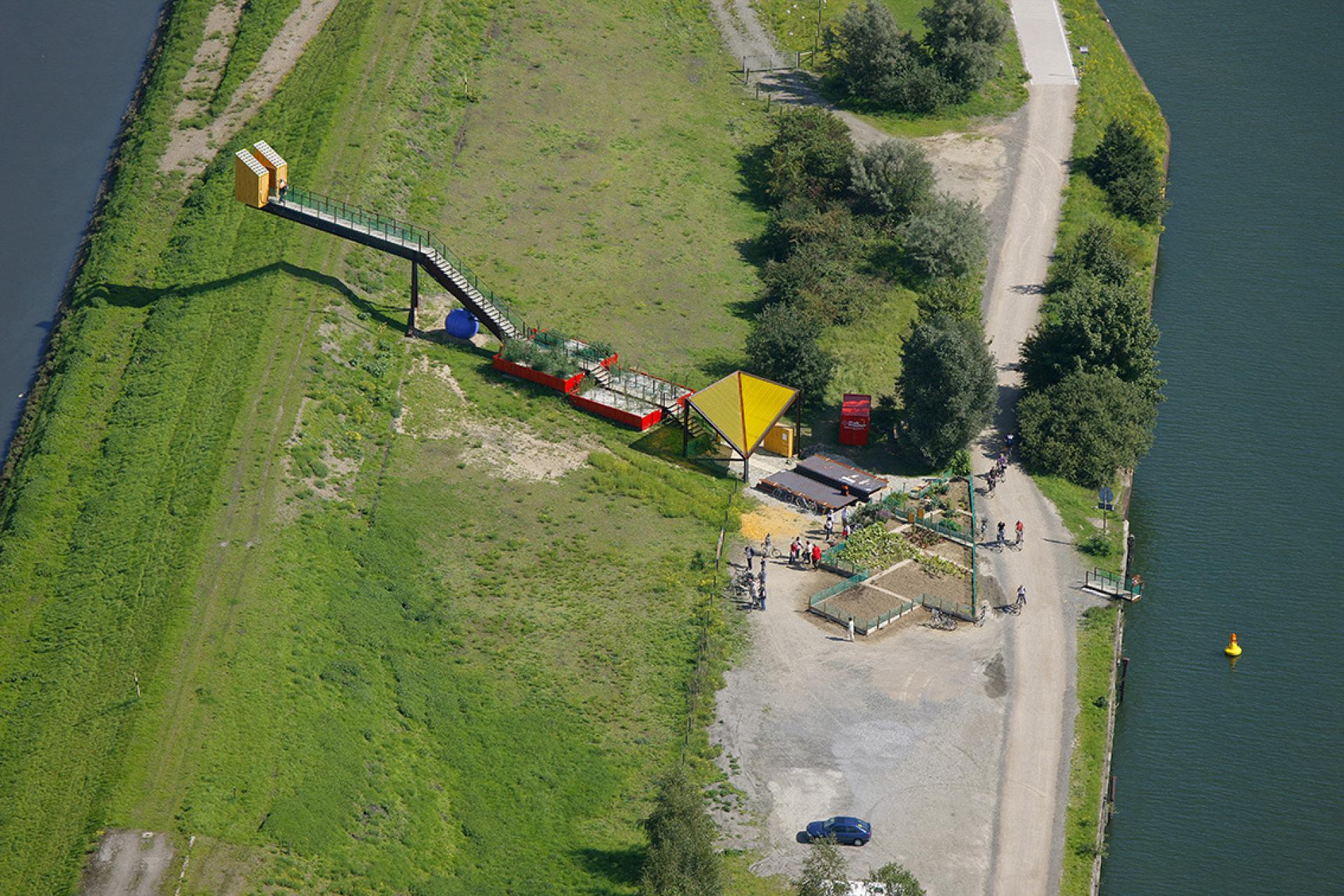
Between Waters in collaboration with Marjetica Potrč. | Photo © Hans Blossey
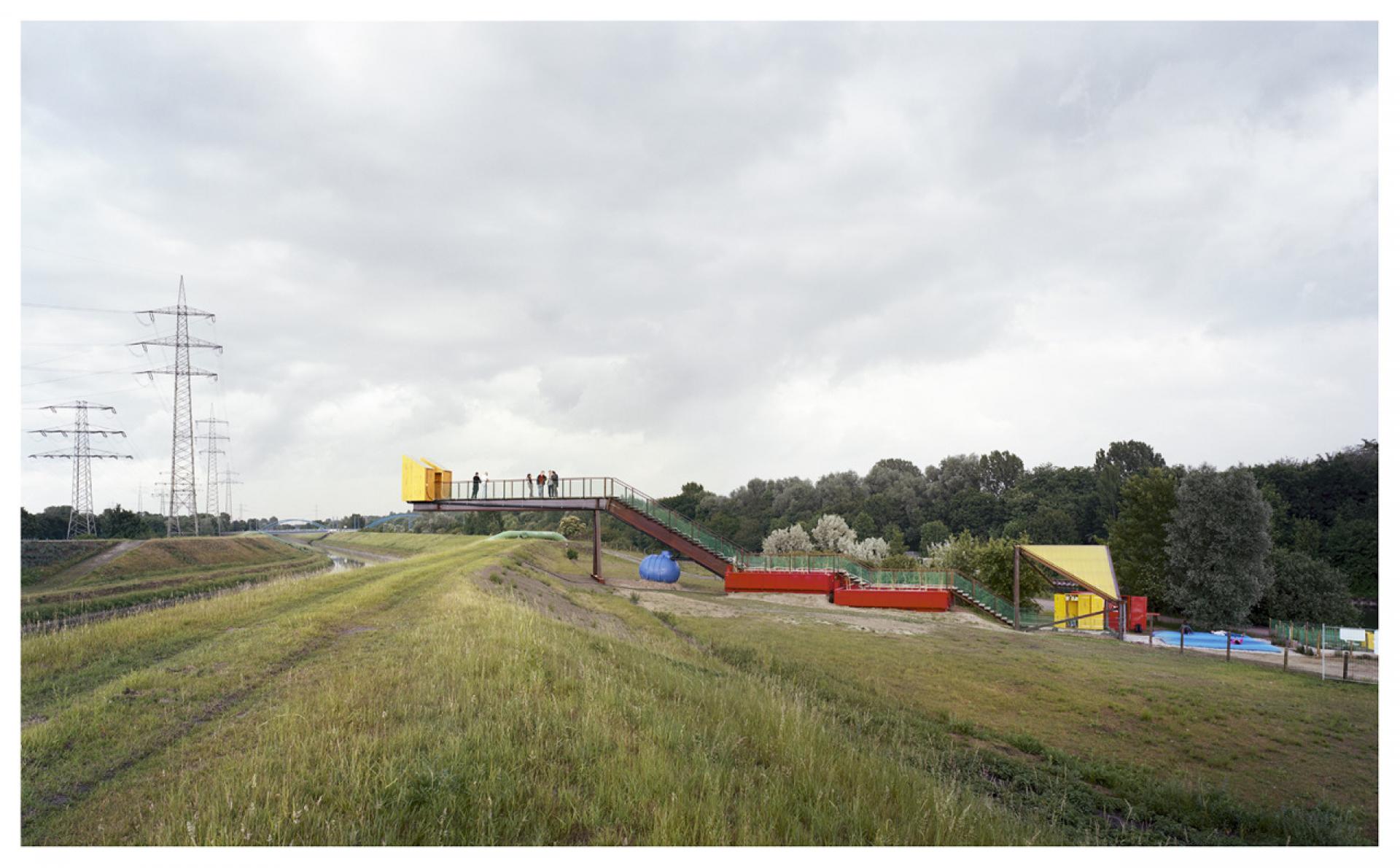
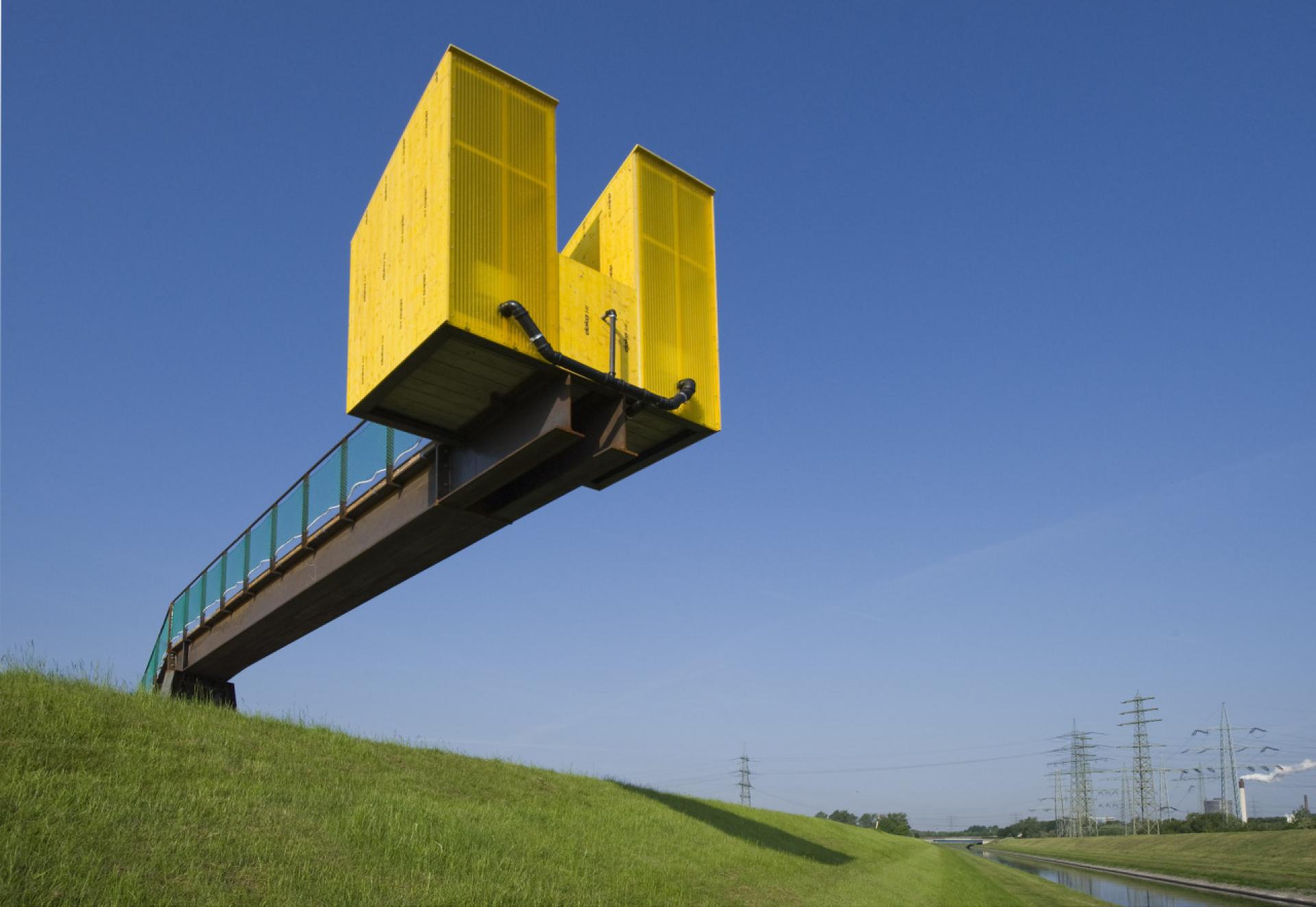
A simple diagram was created in a real scale on the location. | Photo © Bas Princen (up) © Roman Mensing (down)
How you deal with the project funding?
Eva: We can take the example of the Rio de Janeiro, where we were very much self-driven by the idea if there is possible to realize a project because there is no sewage system, especially on vulnerable parts of the city. We were driven by the idea that it must be possible to integrate nature that this locally becomes the treatment of the polluted water. After four years of investigations research production of pilot projects and events, we finally understood that we could not operate outside the system of public works. Although those services are not provided in the zone we were operating in, when we talk about water and sewage we need to get engaged with the public realm. Tendering processes are protected, concessions are given after a long time, like ten years in advance. Innovation in this area is incredibly difficult. To find funding as well is very long term.
How can you survive?
Sylvain: Only when you are supported by the government program or heavy weight stakeholders. That’s the case of the project in India with the Dutch Ministry of the Foreign Affair as a client. In such way you have access to financial mechanism and you can deal with the big scale reality. In the project of Rio we were pioneers, supported only by the Dutch Creative Industry with no political anchorage nor local financial support except for the cultural institutions we partner for the various phase of the project.
Can a small-scale art project become a learning process?
Eva: Of course. With the given budget we realized that we become the clients and the contractors. In such way we take the risk but then you can also execute it with no one in-between. You learn how to lead it, so the learning process is not only for the users but also for the creators.
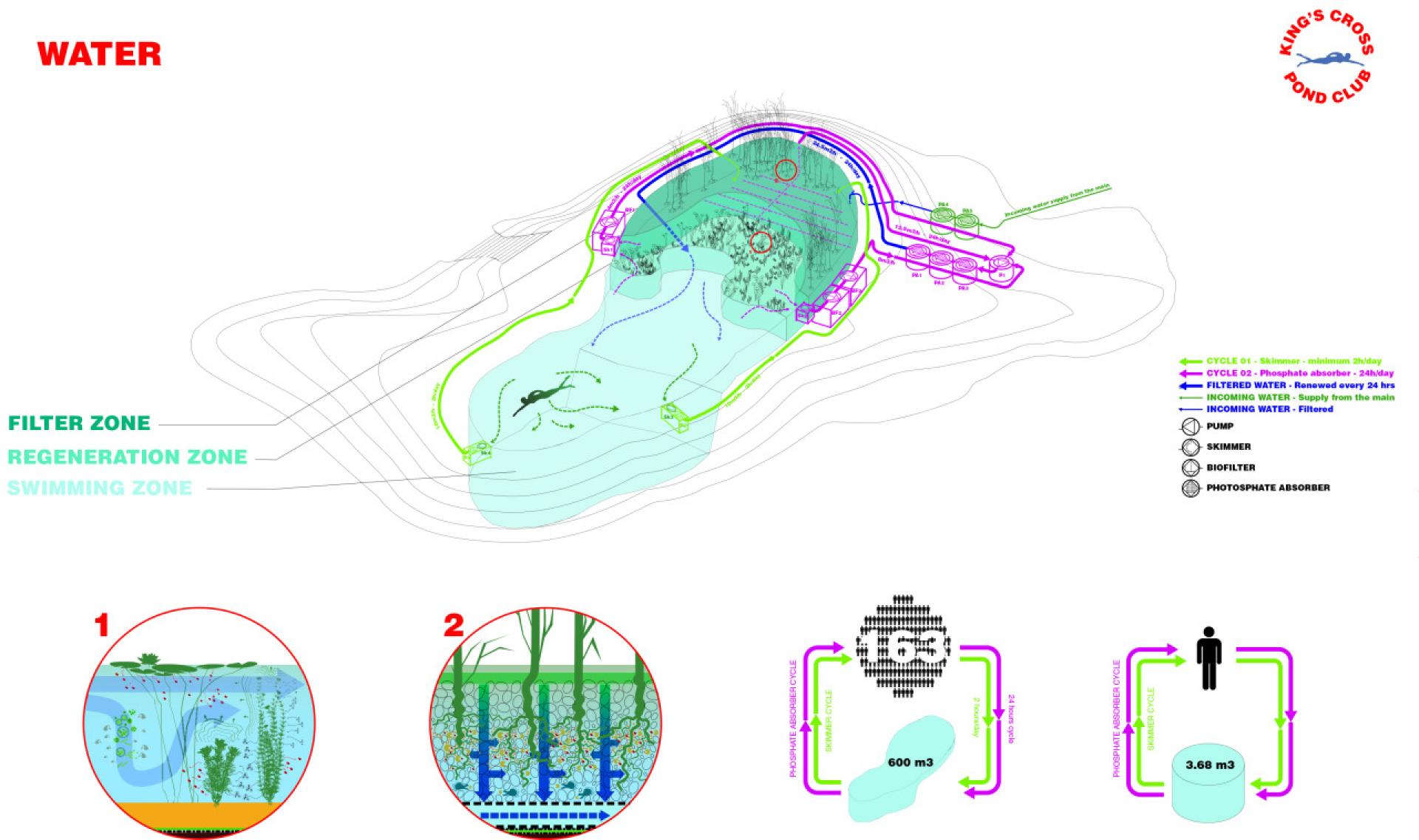
Diagram of The Pond Club in King’s Cross London. | Source via © Ooze
How do you incorporate the natural environment into the urban areas?
Eva: The participatory process especially working with nature is very context related. You need to the people to make something that works for them and it is very important to listen before you come up with ideas.
Sylvain: In all our recent projects you can see how all our thinking is conceived by disturbing processes. As the eternal investment is driving the world, we kind of intrigue this crazy jungle. That makes our principle and activities dealing with the social.
When nature becomes a part of the planning process, how do you deal with unpredicted?
Eva: Look for example the Pond. The client wanted us to sign the contract where we agreed that the landscape would be beautiful. We declined this very subjective impression. Instead we took a part of the landscape and start to work as a contractor for the wild plants on the site. We started to interact with the client. In the begging was the earth, later the plants grew and created a new wildlife. It is important to communicate the narrative and people need to understand that nature cannot be always the same and predicted. In the case of the project of the Kings cross pond club, people for example would come back every two weeks to check the changing landscape.

The realization of The Pond Club in King’s Cross. | Photo © John Sturrock
What is engineered nature? What is a difference between a natural and constructed wetland?
Eva: When we mentioned constructing wetlands people were thinking about a lake. Natural wetlands are everywhere where water meet the land. Many places of our cities used to be wetlands as floods are specific and can enrich the water and soil with oxygen, which then removes polluters from the water. The wetlands can clean the water and with engineering this you make a controlled environment. For example, the volume of water in the Pond could take care exactly of 163 swimmers per day. That is what nature can deal with. The same for a constructed wetland, a certain area of it can take care of the sewage waste of a certain number of people just by using and guiding the natural processes which exist in nature already.
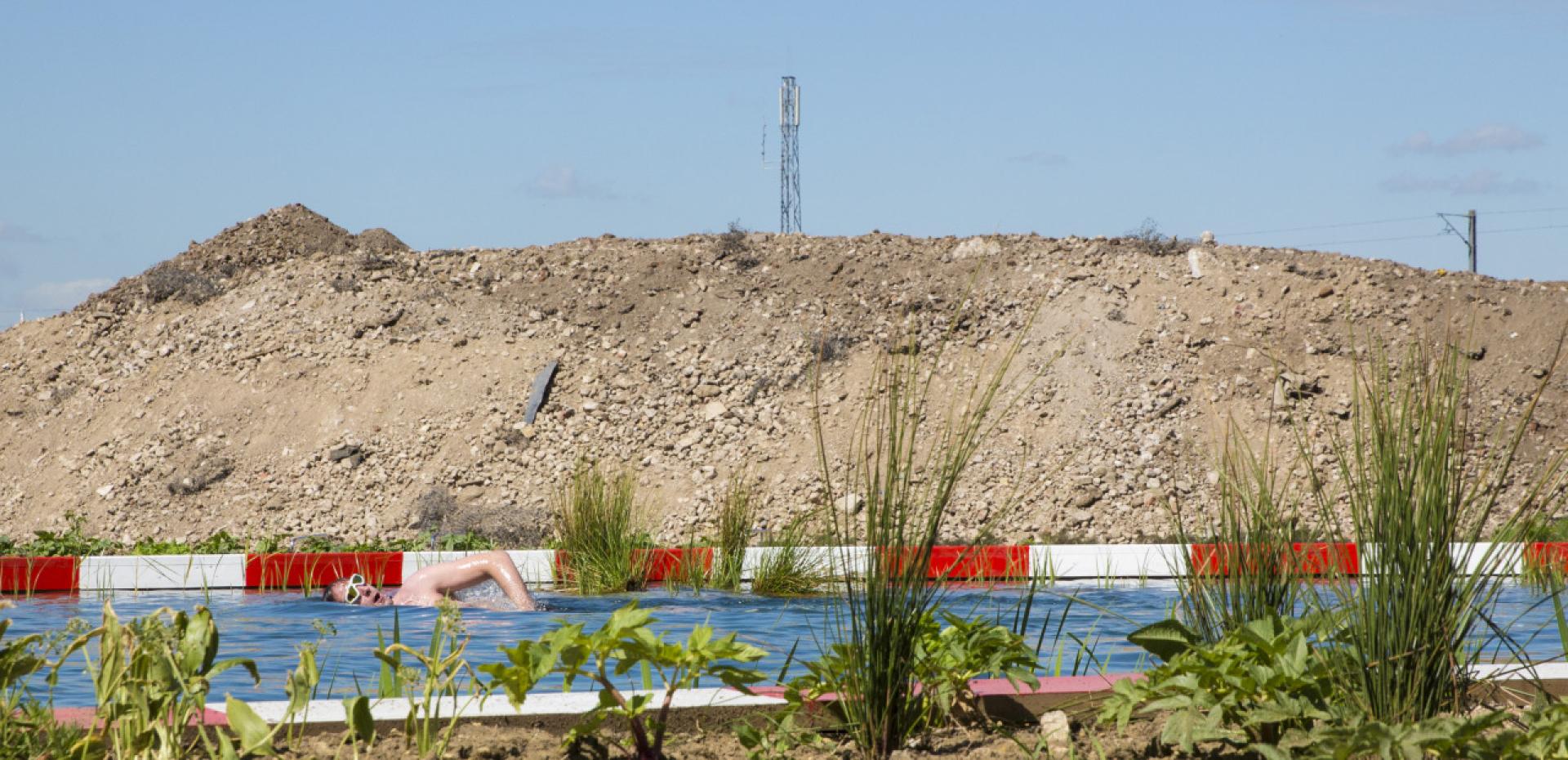

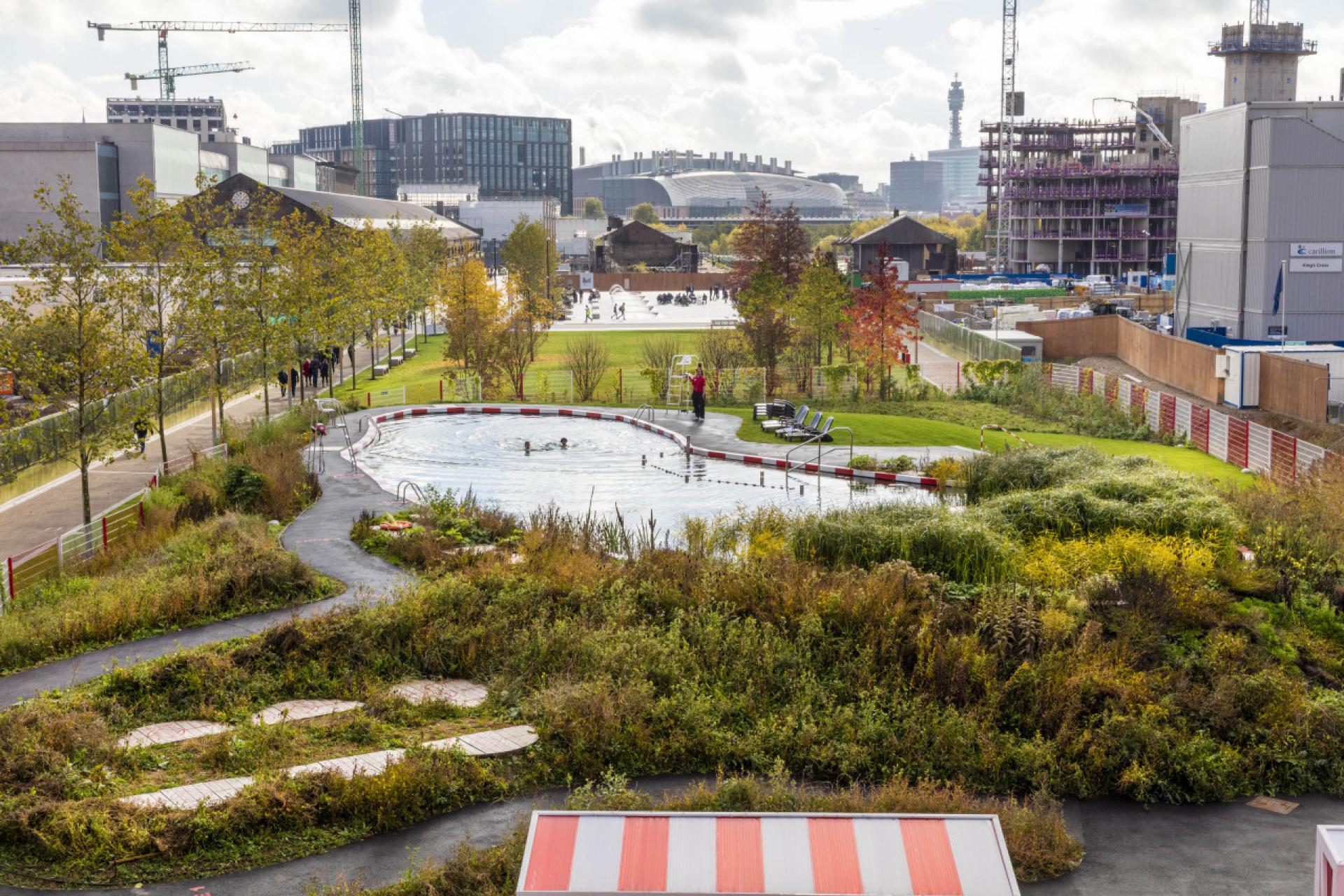
The changing nature of The Pond in London. | Photo © John Sturrock
Sylvain: If for instance we would have put more mineral filters then we could change the volume of the water and the surfaces of filters. Nature reaches the goal so you need to understand these processes and replicate them.
What is important in a partnership with the local community? How do you create trust?
Eva: As for example on Agua Carioca we went into communities where we had connections. Somebody introduced us to the community. The next were interviews. We were listening to the people, which makes people empowered as this in favelas doesn’t happen very often. People were extremely aware of the environment because it was so close to them. The next step was invitation to the events. You come back again and again and again. That builds trust.
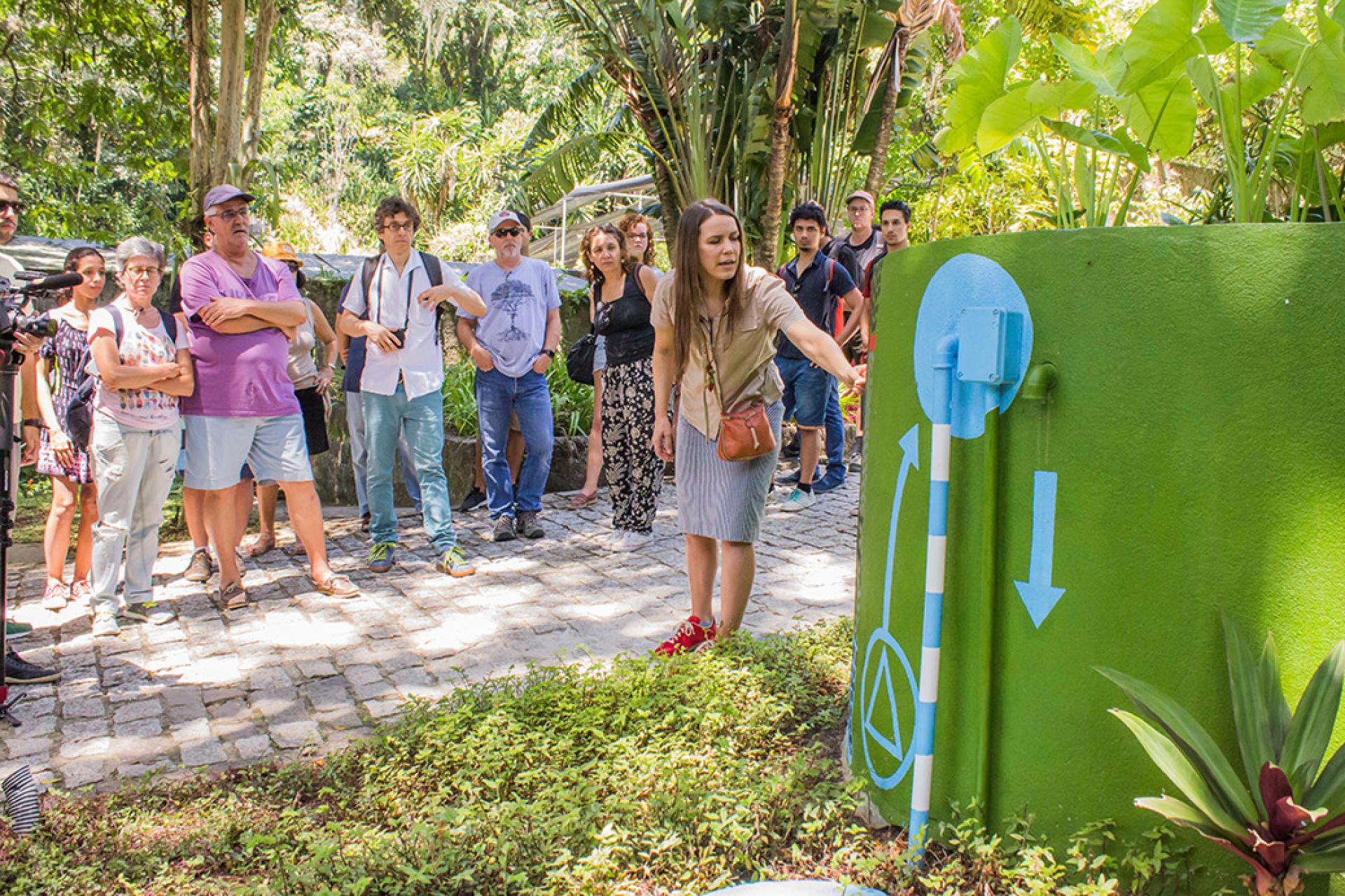
The excursion in the community of the Agua Carioca. | Photo © Rodrigo
Sylvain: For the project development is also important the identification of the spokesman in community.
What about the trust in the commercial locations?
Eva: Yes, the Pond was not in the slum but in the middle of London. As everybody had access to the project, the community embraced it. They formed the group, which came up with the petition to keep the pond signed by 5000 people. From this number 1500 people left online message and 300 people talked about love.
Are your interventions systems of disobedience (it is not necessary to use chloride in water as the human body reacts to water)?
Eva: Our systems are about empowerment in a positive way. It is giving people the tools to understand the processes and deal with them. Project Between the Waters with Marjetica Potrč was a diagram of the water sewage treatment. Every part was visible, colorful and understandable. At the end we engage the people into trusting the different steps of natural base solution processes which manages to treat sewage and render it drinkable. the people could see all the steps and engage in this cycle by drinking the water at the last step of the filtration process. They could see and perceive the steps from urine to drinkable water, and that is what they would drink. This is how simple it is, it is the same how you treat the water. It is disobedience but also empowerment because you understand how simple is to get off the grid. A political act how to show people to live off the grid.